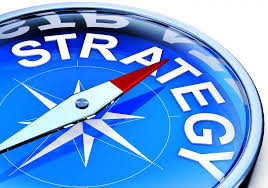
THE 5 STEPS OF STRATEGIC PLANNING
Review your past.
- Study your organization’s vision/mission statement (clearly identify why your team exists in light of this statement).
- Identify the key milestones your team has accomplished over the last one to five years (the highlights and lowlights).
- Describe what has happened in the organization and what decisions have affected your team over the last one to five years.
Assess the current state of your team.
- Report the data and anecdotal evidence regarding the “multiple bottom lines” your team dealt with.
- Assess your team’s outcomes.
- Assess processes your team used to achieve those outcomes.
- Summarize the assessment of your team with a SWOT statement.
Identify goals that would represent successful resolution to your current problems.
- Exercise awareness: Which problems deserve attention?
- Exercise analysis: What are the chief causes of the problems?
- Consider alternatives: What could be done differently?
- Plan action: Who should do what with whom by when and how?
Envision the direction and new elements of your future.
- Identify likely future demands that your team may have to respond to.
- Picture your ideal/preferred future: What would this team be accomplishing if it were fully living up to its potential?
- Brainstorm new features/directions for your team.
- Envision the milestones you would achieve.
Plan the actions/tactics needed for implementation.
- Identify the forces for and against the new and improved team.
- Identify the strategies to capitalize on the forces for the team.
- Identify the strategies to reduce the forces against the team.
- Identify the steps that must be taken to implement the plan.
- Identify who is responsible for which elements of the plan.
- Identify a time for achieving the elements of the plan.
To learn more about Strategic Planning or to inquire about consulting please contact us at 704-274-2050
Facebook at Facebook.com/GDC.TBS Twitter @GDC_TBS Linkedin http://tinyurl.com/GDCTBS
403 Gilead Rd., Suite L
Huntersville, NC 28078



